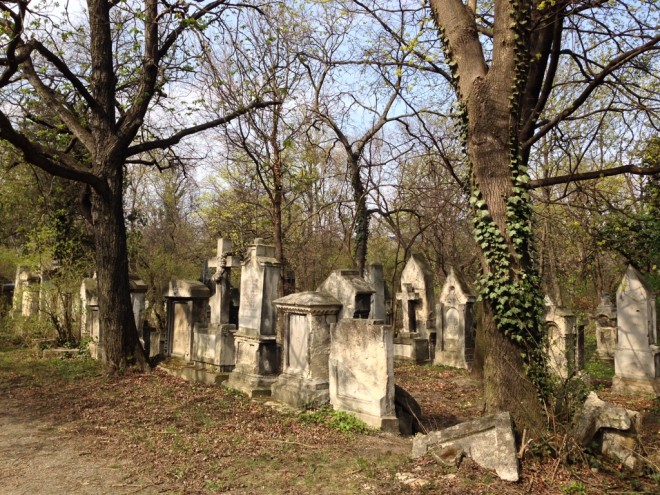
Vienna, Austria—Visiting in spring last year the Biedermeier cemetery St. Marx in the third district, where the Austrian composer Wolfgang Amadeus Mozart was originally buried, I recalled a conversation with a Viennese friend.
“If I say that a number of beautiful parks in Vienna used to be cemeteries, would you believe me?” I asked her.
Setting aside the morbidity, one would think the Viennese were a pragmatic lot. Throughout the centuries, many of these small cemeteries have either relocated, redeveloped or extended for the purpose of urban planning, reconstruction and recreation.
In the first district alone, small cemeteries were typical yet grand fixtures next to churches. There used to be a graveyard beside the oldest church in Vienna, the St. Ruprecht’s. Now it is a busy street of shops and restaurants.
If one walks around the area from where Karlskirche is to the Technical University, note that a former graveyard used to be sandwiched between them.
The catacombs and next-door cemetery of the Stephansdom were closed down due to hygienic reasons. The stench was so intense that attending Mass was a torture.
It was equally tortuous for those in the stores and flats and office buildings surrounding the cathedral. This is perhaps unknown to the tourists who walk around the vicinity.
Many of the Biedermeier—a period that refers to the era between 1814 and 1848, during which the middle class grew and arts appealed to common sensibilities in Central Europe—cemeteries permanently stopped operating due to fear of infection and spread of pestilence. A few have been abandoned and redesigned into full-fledged parks.
From time to time, restorers come in and bring the graves to their original condition.
Mozart and Joseph II
In 1784, Joseph II initiated an austerity program including simplified burial customs. There were objections at that time, thinking it was against their tradition. It was so unpopular but Joseph’s will had prevailed.
So the film “Amadeus” might be true, in some aspects. Mozart’s pauper-like burial was due to the Josephinist decree.
At the Imperial Crypt in the Capuchin Church in Vienna where members of Austria’s longstanding Habsburg Dynasty keep the bodies of their royal ancestors, Joseph’s tomb—in comparison to his parents’ extravagant carriage carrying their corpses—has only a simple bronze sarcophagus. His epitaph: “Here lies Joseph II, who failed in all he undertook.”
The 19th century and now
The famous and second largest cemetery in Europe, the Zentralfriedhof, was built after the small cemeteries closed their doors to become fully designated parks.
Among them is the Schubert Park in the 18th district, where the Viennese composer Franz Schubert used to be interred and is now part of the triumvirate with Mozart and Beethoven leading the musician section of the Zentralfriedhof; and the Haydn Park in the fifth district.
However, Joseph Haydn’s body was exhumed and transported back to Burgenland where he was born.
After World War I, the social democratic government of Vienna began planning to incorporate the abandoned communal cemeteries into parks. Their aim was to give the people an improved lifestyle by designating these abandoned lots as another place for recreation. It is terror and beauty in a sense.
There are neither reports nor documentation of the Roman Catholic Church desisting this grand idea of converting their neglected cemeteries into parks.
Vienna around this time was a poor, miserable place ready to break down. The empire was reduced to almost nothing. The Austrian royalty members weren’t allowed to use their names, though their influence wasn’t somehow diminished.
Vienna today is a bustling city earning a reputation as one of the best places to live. Green living and modernity collide in perfect harmony.
As for my perplexed friend, the information left her feeling horrified and fascinated at the same time. After all, not everyone is privy to this fact unless he or she is fond of cemeteries.
So, the next time you visit Vienna and stand in front of a park, think of the possibility that, once upon a time, it was a graveyard.
The author used to work for Sunday Inquirer Magazine. She now lives in Vienna.